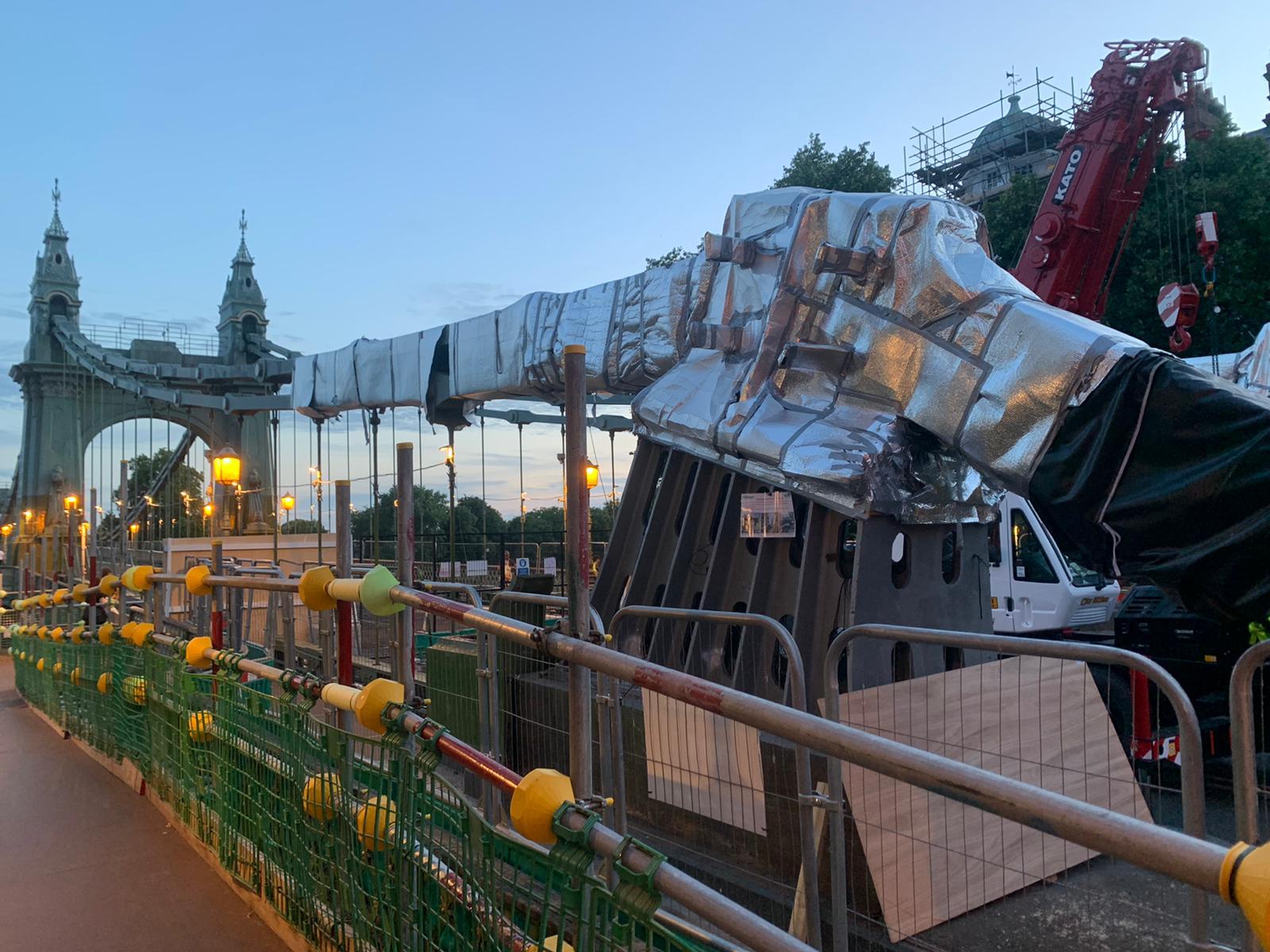
Parts of Hammersmith Bridge have been wrapped in reflective material to help protect it from the extreme heat
Engineers are working round the clock to keep 135-year-old Hammersmith Bridge open during the extreme hot spell.
The historic Grade II* listed bridge had to be fully closed in August 2020 when micro-fractures in its cast-iron pedestals widened during a heatwave.
Since then Hammersmith & Fulham Council's world leading engineers have installed a pioneering £420,000 temperature control system to keep the bridge at a safe temperature and alleviate any stresses on the pedestals.
The successful operation of the system was a key factor in the decision by safety experts to allow the bridge to reopen to pedestrians, cyclists and river traffic last July. It effectively acts as a giant air conditioning unit on each of the four pedestal chains.
The chains, which are anchored to the river bed, are regulated to be kept under 13°C in the summer. If any of them reach 18°C, safety engineers will shut the bridge.
With the Met Office having issued an Amber Alert and temperatures predicted to hit 34°C in the borough next Tuesday, engineers have been working on an extra package of measures to keep the bridge chains cool.
This includes running the cooling system throughout the night and wrapping the parts of the chains that are above the water level in silver insulation foil which reflects the sun.
"The safety of the public is our first priority," said Sebastian Springer, Arcadis Project Manager on the bridge works. "The temperature control system allows us to track weather spikes and maintain a constant temperature. As we deal with the current extreme heat, we are also coming up with innovative solutions to keep the temperature within the threshold."
If temperatures exceed expectations and the temperature threshold is breached, engineers state that the bridge would have to close on public safety grounds. However any closure would likely be only temporary until the heat subsides.
The first phase £8.9m works currently taking place on the bridge involves stabilising the micro-fractures in the pedestals to prevent the threat of future closures in extreme high and low temperatures.
Hammersmith Bridge, built-in 1887, is one of the world's oldest suspension bridges which is why it is also one of Britain's most expensive to repair. It is a Grade II* listed structure made out of wood and wrought iron with the suspension held in place by cast iron pedestals. It is part of Britain's engineering heritage and a national landmark.
H&F has been told by the government to pay an unprecedented 33 per cent of the original estimated £141m to £163m repair bill which would normally have been paid in large part by Transport for London (TfL) and the Department for Transport (DfT). We have made it clear we can only raise that amount of money via a road user charge or toll.
Hammersmith Bridge – all you need to know and latest updates.
Want to read more news stories like this? Subscribe to our weekly e-news bulletin.




